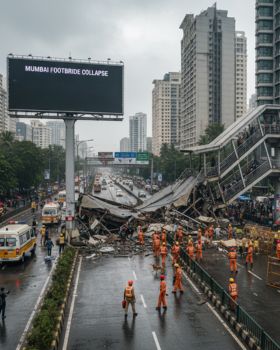
Disclaimer:
This blog post is intended for informational and educational purposes only. The content reflects general insights and opinions based on publicly available information about the Bhopal Gas Tragedy and modern contractor management practices. It is not meant to attribute legal responsibility to any individual, company, or organization involved in the historical event. The mention of the Bhopal Gas Tragedy is used as a case study to highlight the importance of safety and contractor oversight, not to criticize any party involved.
Any references to software solutions, including those by SHEQ Network, are illustrative and should not be construed as claims that such tools would have definitively prevented past incidents. Implementation results may vary depending on organizational practices, safety culture, and user engagement. Readers are encouraged to consult safety professionals or legal experts for advice specific to their operational and regulatory environment.
The Bhopal Gas Tragedy remains one of the most devastating industrial disasters in history. In December 1984, a catastrophic leak of methyl isocyanate gas from a pesticide plant in Bhopal, India, caused thousands of deaths and long-term health consequences for many more. This tragedy has become a benchmark for analyzing industrial safety failures and the importance of stringent oversight in hazardous operations.
Examining the Bhopal Gas Tragedy case study reveals several critical gaps, particularly in managing contractors and third-party workers. Although this disaster occurred decades ago, its lessons remain relevant today, especially when considering how modern technology — such as contractor management software — could help prevent similar incidents.
What Went Wrong in the Bhopal Gas Tragedy?
The tragedy was not just about a mechanical failure but also about systemic issues, including inadequate supervision and safety management. Contractors and external workers were involved in maintenance and other operations, but the oversight of their activities and training was insufficient. This lack of coordination and control over contractor work increased the risk of accidents.
The absence of a comprehensive contractor management system to track contractor compliance, training, and work permits contributed to unsafe practices. Communication between plant management and contractors was fragmented, increasing the chance of errors or safety lapses.
How a Contractor Management System Could Help
While no system can guarantee 100% prevention of accidents, a well-designed contractor management portal could help organizations significantly reduce risks associated with third-party contractors.
A digital system could provide a centralized platform where contractor credentials, training records, and certifications are stored and accessible. This can help ensure that only qualified and approved contractors work in hazardous environments.
Moreover, the portal could help assign and manage work permits systematically, supporting compliance with safety protocols. While it may not verify every task in real time, the system could provide timely alerts or reminders to managers to review permits, safety checklists, and risk assessments before contractors start their work.
In addition, a contractor management software solution could facilitate better communication between contractors and plant management by providing a transparent record of assigned work, scheduled maintenance, and safety procedures. This helps create a culture of accountability and preparedness that was notably lacking in Bhopal.
The Benefits of Implementing Contractor Management Software
Using a contractor management system could help organizations:
- Track compliance and training: Ensure contractors meet safety and regulatory requirements before starting work.
- Streamline permit management: Manage and issue work permits in a structured manner that helps avoid unauthorized or unsafe work.
- Improve communication: Provide a centralized portal for sharing safety documents, procedures, and updates.
- Enhance reporting and audits: Maintain records for inspections, audits, and incident investigations.
These benefits collectively support a safer working environment, particularly in high-risk industries like chemical manufacturing, oil and gas, or construction.
Learning From Bhopal to Build a Safer Future
The Bhopal Gas Tragedy case study starkly illustrates the consequences when safety oversight and contractor management fall short. By reflecting on this event, organizations can recognize the critical importance of investing in digital tools that improve safety governance.
While some companies still rely on paper-based methods or fragmented systems, these approaches may lack the efficiency and reliability needed in complex operational settings. A contractor management software solution could help bridge that gap by organizing critical contractor information in one place and supporting better decision-making related to safety and compliance.
It’s important to note that such software is a tool — its effectiveness depends on proper implementation and user engagement. No software can replace a strong safety culture and proactive management, but the right system could help reduce risk and improve oversight.
Conclusion: How Contractor Management Software and Portals Could Help Today
In light of historical industrial disasters like the Bhopal Gas Tragedy, it’s clear that managing contractors safely is not just good practice—it can be a matter of life and death. Investing in a contractor management system or contractor management portal could help organizations modernize their processes, streamline compliance, and maintain comprehensive records.
Choosing the right contractor management software could help you simplify safety training, work permit issuance, and contractor compliance tracking — reducing risk and supporting operational continuity.
If your organization works with contractors in potentially hazardous environments, consider exploring contractor management solutions that could help you improve safety oversight without over-committing on real-time monitoring promises. Taking this step can contribute to safer worksites and prevent avoidable tragedies.
🔗 Learn more at sheqnetwork.com and transform the way you manage contractor safety today.
👉 Ready to see it in action? Book your free demo here!
Ready to transform? Contact us today at info@sheqnetwork.com or call us at +353 21 4536034 for a personalized demo!



